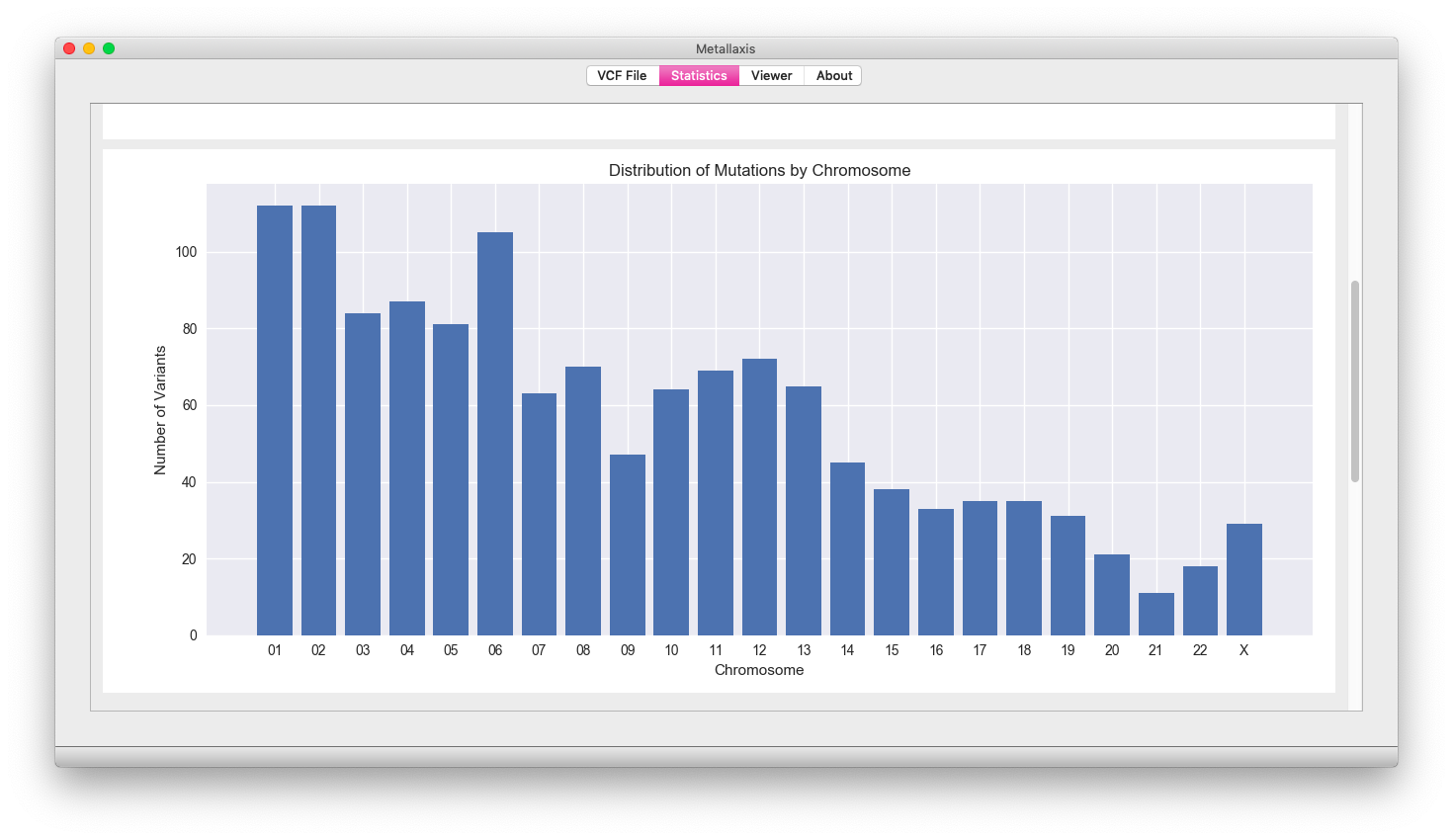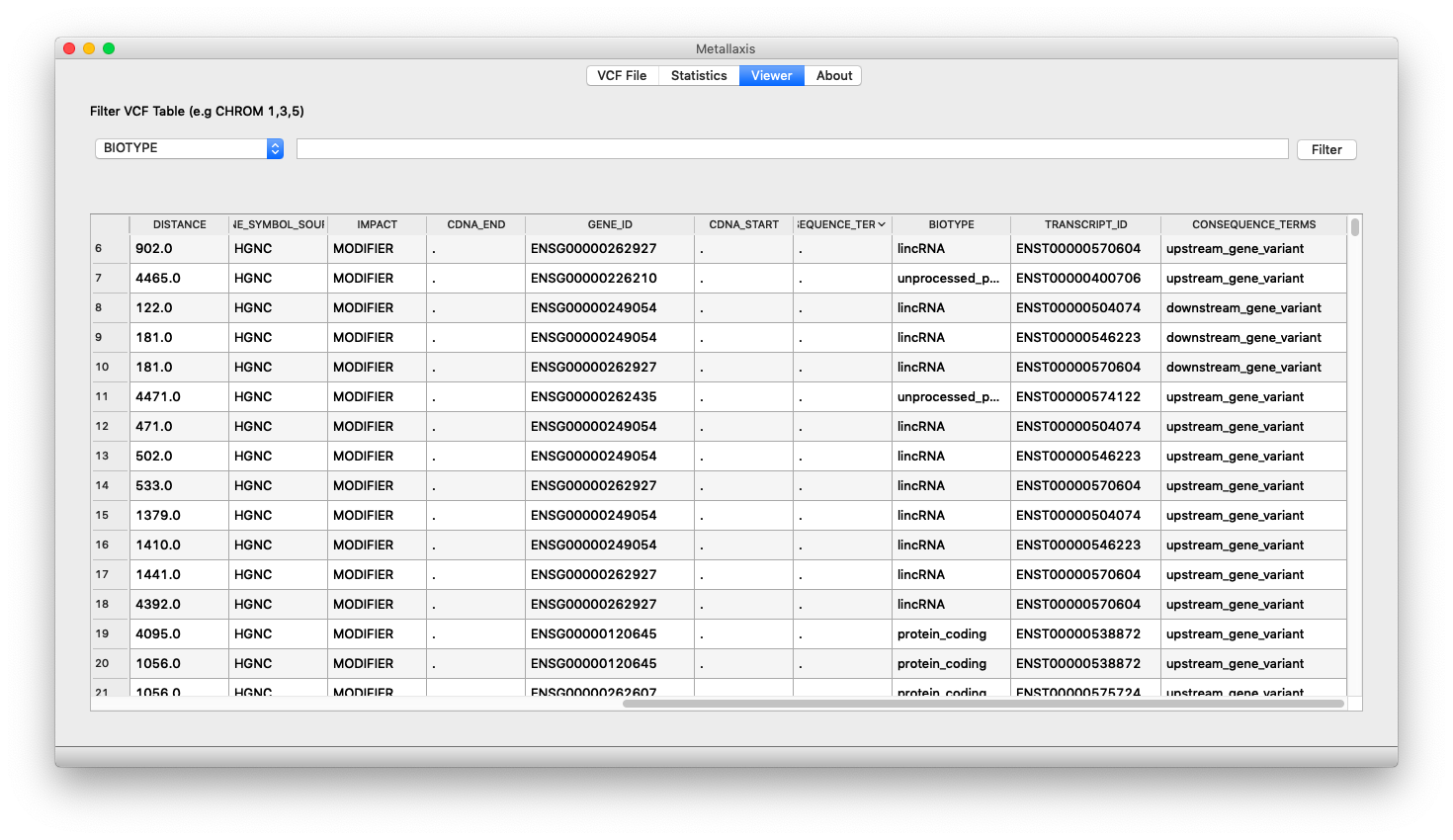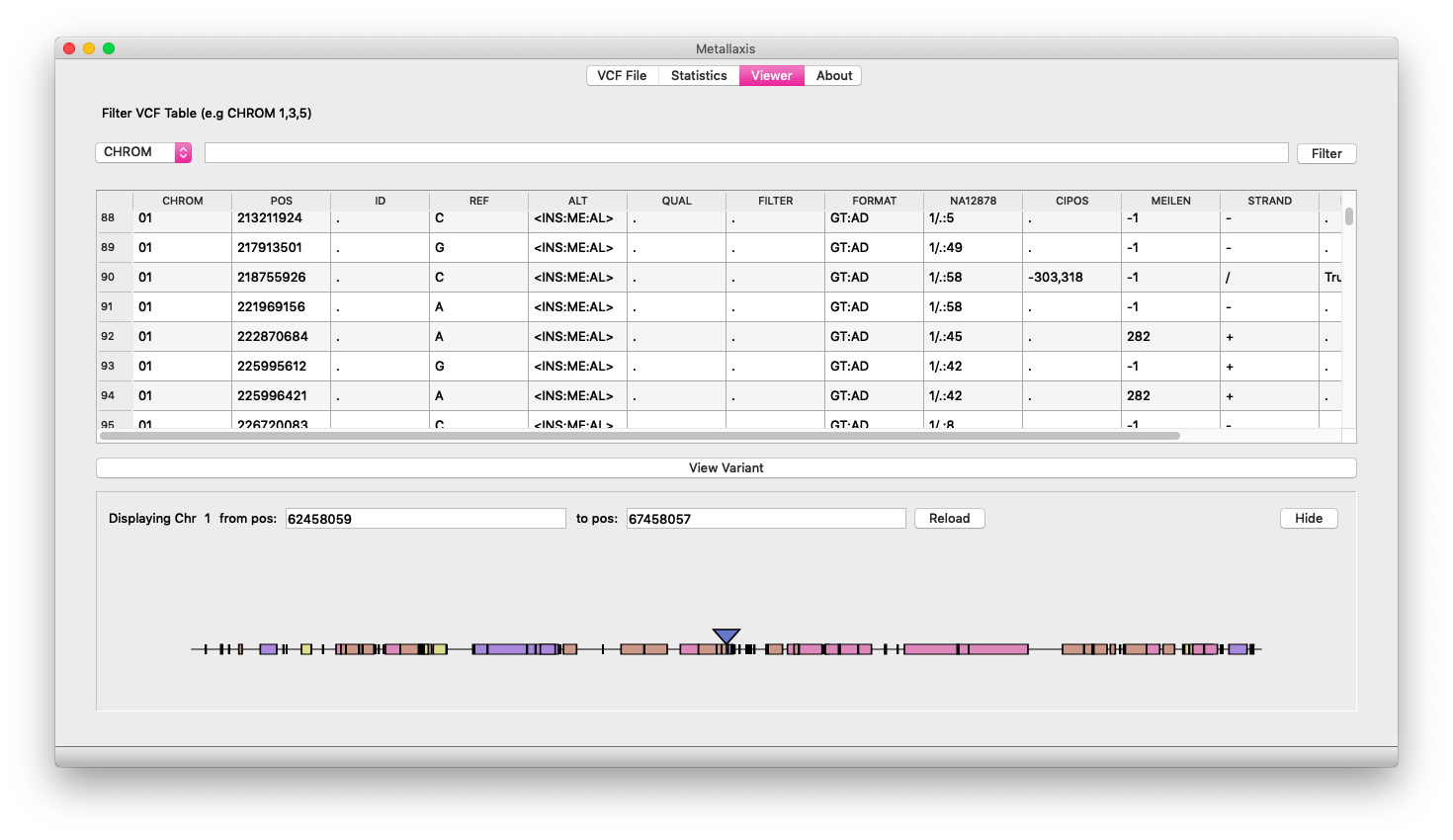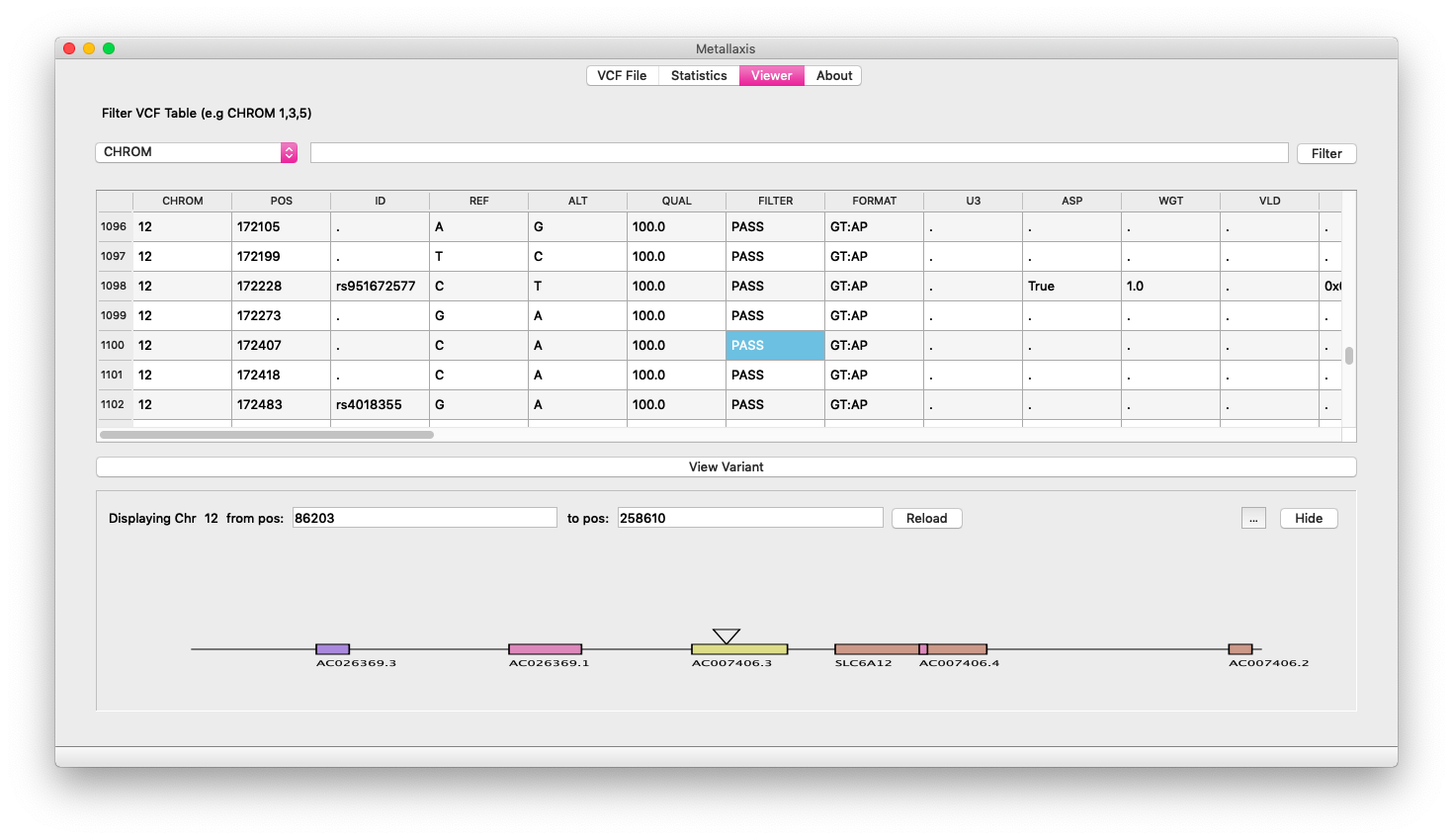Metallaxis is a Python graphical interface for viewing and annotating VCF files. On loading a VCF file or compressed variant (vcf.gz,vcf.xz) it will generate statistics, graphs, and open a table view where the variants can be sorted, filtered, and their position visualised compared to the location of genes, based on data retrieved from API requests to ENSEMBL.
Additionally, there is the option to annotate the VCF, whereby the dbSNP and clinVar databases are downloaded and SnpEff is used to annotate the VCF, to view the impact of the variant.
On the interface basic statistics and graphs are displayed in the statistics pane, and a Table pane is also avaliable on which variants can be filtered by data from VCF, from annotation, or parsed form the INFO column.
- INFO column splitting into columns that can be sorted
- Filtering of all VCF columns
- Automatic annotation from dbSNP, ClinVar, and ENSEMBL (provided VCF is human)
- Automatically generated statistics and graphs
- Savable analysis as a portable sqlite database
Sean Laidlaw, with supervision from Anna-Sophie Fiston-Lavier, and with contributions from Qiqi He.
Python:
- Python 3.6
Libraries
- python-magic : 0.4.15
- pandas : 0.23.4
- numpy : 1.15.4
- PyQt5 : 5.11.2
- requests : 2.20.1
- matplotlib : 3.0.2
- wget : 3.2
Use the package manager pip to install Metallaxis.
pip install MetallaxisMetallaxis can also be installed from source, by running a git clone and then running the make file which will install dependancies and install as a python module.
git clone https://github.com/SL-LAIDLAW/Metallaxis
cd Metallaxis && makeTo open the GUI and get started, run Metallaxis as a module:
python3 -m metallaxisIt can also be run directly on a VCF file:
python3 -m metallaxis ../samples/1000_genomes_extract.vcf.gzOr to load a previously saved Metallaxis session, by using the saved database file as argument:
python3 -m metallaxis ../saves/big_saved_analysis.sqliteExample variant data displaying statistics of variants by chromosome, as well as number of variants by position for each chromosome.


Example variant data with annotation listing consequence terms, biotype, gene id, impact, etc. for some of our variants.
Example data showing off filtering ability of Metallaxis, not just limited to normal VCF columns but works equally well on recently obtained annotation columns:
Visualising variant position compared to nearby genes is also easy, with a customisable window, allowing zooming in or out.
- Generate statistics off of annotation data
- Write documentation to be generated by Sphinx
- Split __main__ into separate files for easy importing and readability
- Add secondary annotation to get ontology and phenotype information
Pull requests are welcome. For major changes, please open an issue first to discuss what you would like to change.





